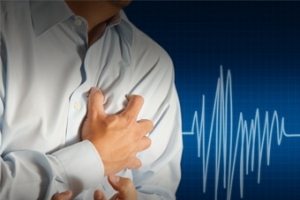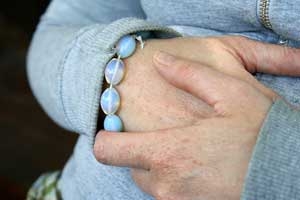Panic Attacks Online Course - Part 1: What is a panic attack?
Hundreds of thousands of years ago a panic attack was a very useful thing. We led much more physically challenging and dangerous lives then. We didn't have sharp teeth or claws and so we had to be able to react very quickly to a threat. And in those days there were two simple choices. We could either run or, if desperate enough, we could fight. In this case, a panic attack is called the 'fight or flight response'. You may well have heard of it.
The Fight or Flight Response
The fight or flight response can be seen as one of the most important parts of our make-up - a highly efficient survival response for dangerous times. Back then, threats were simple and straight forward but often very dangerous - a wild animal, or member of an enemy tribe for instance.
That is why the mind of a human being can trigger a panic attack fast and unconsciously. This is highly important. People who suffer panic attacks often report that "they come from nowhere" and this is an essential part of the fight or flight response.
The Panic Attack : Faster Than the Speed of Thought
If you are in a threatening situation and you have to think before getting the hormonal changes associated with the flight or fight response, it may well be too late. Alternatively, you might make the wrong choice, so the unconscious part of our mind takes care of it. And of course, in a survival situation, it is better to respond as if danger is present when it's not, rather than the other way round. Much safer to err on the side of caution!
[In case you're wondering what the 'unconscious mind' is : Processes such as digestion, blood pressure and body temperature are controlled and monitored by the brain. These functions generally occur outside of awareness. A panic attack is also controlled largely unconsciously, hence the feeling that they 'come from nowhere'.]
If it is unclear how this relates to a panic attack in a supermarket, or in the street, then bear with me - all will become clear. So, we've talked about the evolutionary reasons for panic, but what is actually happening to the body during a panic attack? Why does it feel so strange?
What happens during a panic attack?
Well, several things happen as your body alters its priorities from long term survival to emergency short term survival. In response to the release of hormones such as adrenaline, your blood pressure increases and breathing speeds up preparing you for muscular effort.
Your legs may shake as they are prepared for running; your hands may shake as the large muscles of your arms are prepared to fight. Your palms and feet may become sweaty to give you better grip.
Blood is shunted away from the stomach to the major muscle groups where it will be used during an emergency. This is why people who experience regular stress often have digestive problems: blood is constantly being pumped to areas other than the stomach.
Other changes that occur during a panic attack, or fight or flight response are that the pupils dilate to let in more light, so we can gain more information about the situation. You may also feel like vomiting or defecating, which too can be seen to have survival value. If you vomit or defecate then you will be lighter to run from an attacker and are less appetising as a potential meal.
Remember… all these responses have survival value in the sort of circumstances that they originally evolved for. So why is it that so many of us experience a panic attack in a comparably safe modern environment?

Get a free hypnosis session with our new Overcome Anxiety app for iPhone & Android
Includes our most popular anxiety treatment session free, with the option to upgrade to 10 more sessions.
Get the Overcome Anxiety Hypnosis app for iOS (iPhone or iPad) here or for Android here.








